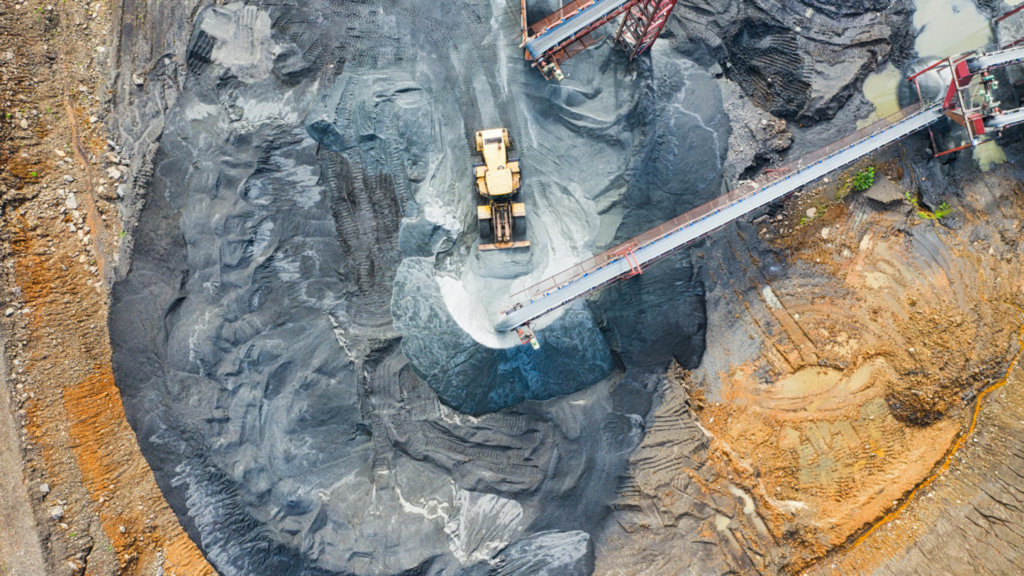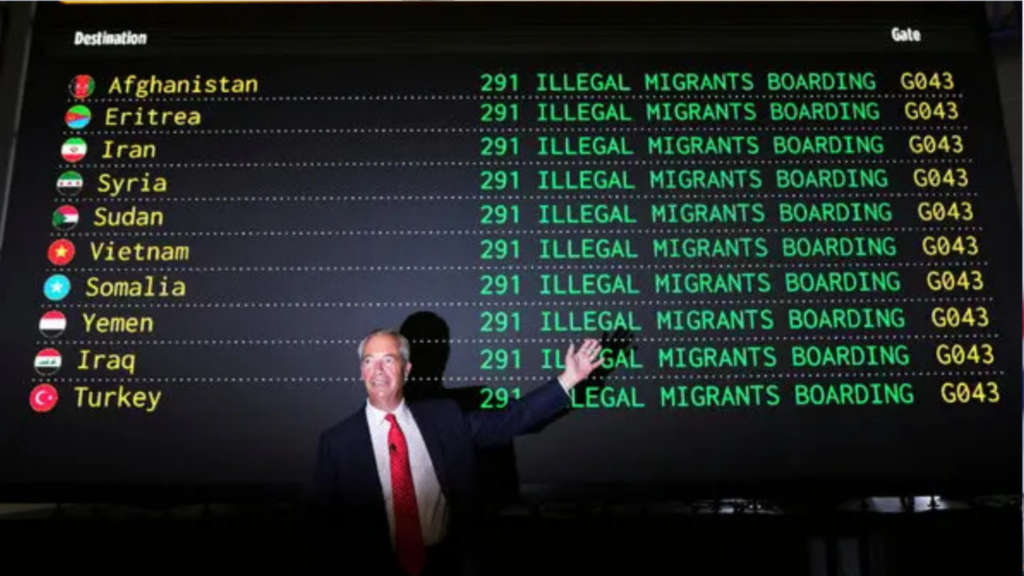Mineral-resources Extraction, Political Economy, and Political Risks in the Horn of Africa
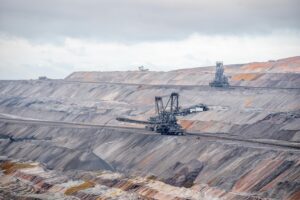
1) Overview and stakes
The Horn of Africa (HoA)—here focusing on Ethiopia, Eritrea, Somalia/Somaliland, Djibouti, and (for the regional market effect) Sudan—sits astride the Red Sea–Gulf of Aden maritime chokepoint. Below ground, it holds commercial deposits of gold, potash, tantalum/lithium, copper-zinc volcanogenic massive sulphide (VMS) systems, industrial minerals and dimension stone. Above ground, it features fragile institutions, interlocking conflicts, and shifting regional alignments that transmit high political risk premia into the mining value chain (licensing, operations, logistics, export, and finance). Recent data show how fast minerals can become entwined with conflict economies: declared Sudanese gold production in 2024 reached the mid-60s tonnes, with artisanal and small-scale mining (ASM) providing the overwhelming share and financing armed actors on both sides of the civil war (Baldo and Soliman, 2025).
At the same time, global demand for critical minerals (battery materials and fertilizers) is reframing policy. The Colluli potash project in Eritrea and Ethiopia’s Danakil basin projects, alongside tantalum-lithium prospects at Kenticha (Ethiopia), illustrate both opportunity and governance strain—licence revocations, arbitration threats, community protests, and transparency debates (World Bank, 2025; Global Arbitration Review, 2025).
2) What the numbers say (selected indicators)
Table 1. Snapshot of minerals and governance signals (latest public sources)
|
Country |
Key minerals/projects |
Production/Reserves signals |
Governance/market signals |
|
Ethiopia |
Gold; potash (Danakil/Afar); tantalum-lithium (Kenticha) |
Gold output ~3,480 kg (2022) (CEIC); historic peak 12,581 kg (2013). |
EITI implementing country; recurring environmental & community conflict at Lega Dembi; recent licence turbulence for potash and Kenticha (EITI; HRW 2023; Reporter 2024; arbitration notice 2025). |
|
Eritrea |
Colluli potash (Danakil Depression); past Cu-Zn-Au VMS (Bisha) |
Colluli expected revenues ≈ US$200 m/yr when fully onstream (World Bank MPO, Apr 2025). |
Growing pipeline; large sulphate of potash (SOP) and muriate of potash (MOP) potential reshapes fiscal outlook; tight state role (World Bank, 2025). |
|
Somalia / Somaliland |
Prospective Au, base metals, gemstones; nascent oil/gas |
Institutional readiness improving; Intergovernmental Forum on Mining, Minerals, Metals and Sustainable Development / International Institute for Sustainable Development (IGF/IISD) Mining Policy Framework Assessment (August 2025). |
Very high political-security risk; Turkish security & hydrocarbon deals alter risk calculus and maritime posture. |
|
Djibouti |
Industrial minerals & dimension stone |
Small mineral base relative to logistics economy |
Port-centric model; mining is peripheral; exposure via Red Sea security and regional politics (International Crisis Group [ICG], 2025). |
|
Sudan (regional price-setter for ASM gold) |
Gold (predominantly ASM) |
~mid-60s tonnes declared in 2024; smuggling significant (Chatham House 2025; FT 2025). |
Gold rents deeply securitized; conflict finance and illicit flows; sanctions-evasion networks. |
Table 2. Illustrative quantitative points for 2022–2025
|
Indicator |
Ethiopia |
Eritrea |
Somalia/Somaliland |
Sudan |
|
Gold production (latest confirmed) |
3,480 kg (2022) |
n/a |
n/a |
~64–80 t (2024 est./declared) |
|
Key fertilizer/critical mineral project |
Danakil potash; Kenticha Ta-Li |
Colluli potash (SOP/MOP) |
Early-stage mining governance under MPF |
ASM-dominated gold |
|
Notable 2024–25 policy/market event |
Potash licence dispute; Kenticha licence surrender order |
Colluli revenue guidance ~US$200 m/yr (when onstream) |
MPF assessment (IISD/IGF), Turkish O&G deal |
War-economy gold, smuggling |
|
Transparency hook |
EITI implementing country |
n/a |
MPF benchmark |
n/a |
Sources: CEIC Ethiopia gold (2022); Chatham House (2025); World Bank MPO Eritrea (2025); EITI Ethiopia; Reporter Ethiopia (2024).
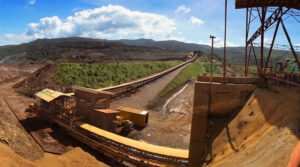
3) Political-economy dynamics: rents, rules, and rivalries
3.1 Rents and the conflict-institution nexus
Mineral extraction generates rents—surplus profits—that are attractive to coalitions in power and to armed challengers. Where institutions are weak, the distribution of rents (licensing, fiscal take, off-budget marketing boards, state-owned enterprises) easily becomes contested, fueling corruption, repression, or conflict. Sudan is a cautionary tale: the Rapid Support Forces (RSF) and Sudanese Armed Forces (SAF) each seek control over production sites, trading nodes, and chemical inputs (notably cyanide). The result is a securitized gold sector where ASM booms under predatory taxation and smuggling networks, while formal oversight has withered (Baldo and Soliman, 2025).
3.2 Regulatory capacity and contractual stability
Investor risk models in the HoA assign high weight to regulatory uncertainty. Ethiopia’s potash disputes and Kenticha’s licensing controversy highlight the risk of unilateral policy shifts, administrative opacity, and centre–region frictions in resource federalism. Reports of licence surrender orders (May 2024) and subsequent arbitration claims (Apr 2025) against Ethiopia illustrate how quickly country risk can reprice projects and deter capex (Reporter Ethiopia, 2024; Global Arbitration Review, 2025).
At the same time, transparency initiatives help. Ethiopia remains an EITI-implementing country; EITI reporting has supported debates on ASM formalization, licence disclosure and gold marketing rules. While not a panacea, EITI-type transparency reduces information asymmetries and can build process credibility that lowers renegotiation risk (EITI country page; EITI Progress Report 2023/24).
3.3 Social licence and environmental justice
Local grievances can halt mines even when national policy is supportive. Ethiopia’s Lega Dembi gold mine is emblematic: community complaints and independent evidence point to toxic exposure (mercury, arsenic), livestock deaths, and birth defects; audits were not disclosed publicly for years, degrading trust and triggering protest (HRW, 2023; EIB Complaints Mechanism, 2021). Social licence failures here travel across the sector, raising the bar for new projects and attracting rights-based legal strategies.
3.4 Geopolitics, maritime corridors, and infrastructure
Resource extraction in the HoA depends on secure export corridors—particularly to Eritrea’s Massawa, Djibouti, and (for Somalia/Somaliland) Berbera/Bosaso. Disputes over Red Sea access (e.g., Ethiopia–Somaliland Memorandum of Understanding (MoU)) and competing security partnerships (Turkey–Somalia maritime deal) interact with mining through logistics costs, sanctions exposures, and investors’ force-majeure calculations (ICG, 2025; AP, 2024; Reuters, 2024).
4) Country lenses
4.1 Ethiopia
Prospectivity: Potash in the Danakil basin; hard-rock Ta-Li at Kenticha; gold belts in Oromia and Benishangul-Gumuz. Performance: Gold production in 2022 was 3,480 kg, far below the 2013 peak, reflecting policy volatility and supply-chain leakages to informal/contraband channels (CEIC, 2024). Ethiopia’s authorities have courted critical minerals investors, but recent policy moves—in particular licence surrender orders for Kenticha and revocation disputes in the potash space—signal shifting governance preferences and fiscal bargaining (Reporter Ethiopia, 2024; Global Arbitration Review, 2025). Risks: (i) environmental liabilities and community conflict (Lega Dembi); (ii) contract stability; (iii) regional federal dynamics; (iv) corridor dependence on Djibouti. Mitigants: EITI implementation; progressive disclosure; negotiated stabilization clauses; third-party ESG monitoring; shared-benefit schemes at woreda/kebele levels.
4.2 Eritrea
Prospectivity: Colluli (SOP/MOP); historical Bisha VMS cluster; Asmara belt prospects. Performance: World Bank’s April 2025 macro tables flag Colluli’s potential to deliver c.US$200 m/yr at steady state—material for a small economy. Risks: concentrated state role; sanctions exposure; limited domestic market depth for services and finance. Mitigants: predictable royalty regime; offtake-anchored project finance; maritime proximity (Massawa).
4.3 Somalia/Somaliland
Prospectivity: Hard-rock gold and base-metals showings; hydrocarbons offshore/onshore. Performance: The August 2025 Mining Policy Framework (MPF) assessment identifies progress on legal scaffolding but capacity gaps in environmental management, community engagement, and inspection. Turkey–Somalia defence/oil deals may strengthen maritime enforcement yet add geopolitical layers to investment risk. Risks: al-Shabaab insurgency; centre–periphery contestation; non-recognition issues in Somaliland. Mitigants: building MPF-compliant systems; carefully sequenced licensing; security-development compacts linking royalties to local services.
4.4 Sudan (regional spillover)
Prospectivity/Performance: Gold is king; ASM employs large numbers and dominates output. Chatham House estimates and corroborating press reporting indicate declared production in 2024 around the mid-60s tonnes, with pervasive smuggling to the Gulf and Russia; gold rents are directly fueling war economies (Baldo and Soliman, 2025). Risks: severe—physical security, sanctions, reputational. Mitigants: extremely limited at present; humanitarian carve-outs and targeted supply-chain due diligence are baseline requirements.
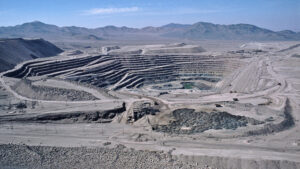
5) Risk matrix and actionable mitigants
|
Risk factor |
Mechanism in HoA mining |
Practical mitigants |
|
Conflict & coercion |
Mines/ASM taxed by armed actors; intimidation of communities (notably Sudan) |
Conflict sensitivity analysis; explicit sanctions compliance; third-party monitoring; traceability for gold/critical minerals. Chatham House (2025) |
|
Contract volatility |
Licence revocations; surprise fiscal changes (Ethiopia potash/Kenticha) |
Stabilization clauses; phased capex with milestones; escrowed community funds; early disclosure of beneficial ownership. Global Arbitration Review (2025) |
|
ESG & social licence |
Lega Dembi-type health harms trigger shutdowns and litigation |
Full ESIAs; publish audits; health baselines & biomonitoring; grievance redress mechanisms co-governed with communities. HRW (2023) |
|
Transparency gaps |
Non-disclosure of contracts and payments deters finance |
EITI-aligned reporting; contract portals; independent revenue reconciliation; ASM formalization programs. EITI (2024) |
|
Corridor & geopolitics |
Red Sea insecurity; Ethiopia–Somaliland MoU shocks; Turkish security footprint |
Multi-route logistics (Djibouti/Eritrea/Kenya); political-risk insurance; structured offtakes insulated from transport disruptions. International Crisis Group (2025), Reuters (2024) |
6) Outlook: critical minerals, fertilizers, and policy credibility
Three medium-term themes stand out.
First, critical-minerals and fertilizer-security logics are converging. Potash (SOP/MOP) at Colluli and Danakil aligns with African food-systems strategies; Ta-Li at Kenticha maps onto battery-supply chains. This will attract diversified investors (traders, agri-inputs, battery OEMs) and intensify fiscal bargaining between governments and sponsors. Credible, rules-based contract management will trump ad-hoc discretion (World Bank MPO, 2025; CEIC; Reporter Ethiopia 2024).
Second, transparency is now a financing precondition. In tightly priced debt markets, lenders discount opaque projects. Ethiopia’s EITI status is a platform to expand disclosure to include: (i) project-by-project payments, (ii) procurement rules for cyanide/mercury in gold ASM, and (iii) publication of environmental audits in real time. Doing so would directly address the Lega Dembi legacy and reduce community-level legitimacy deficits (EITI, 2024; HRW, 2023; EIB CM, 2021).
Third, logistics and geopolitics are inseparable from mine economics. Export corridors are embedded in competitive security alliances (e.g., Turkey–Somalia; Ethiopia–Somaliland MoU; Red Sea tensions). That volatility feeds directly into contractors’ risk pricing (ICG, 2025; AP, 2024; Reuters, 2024). Projects with flexible offtake and multi-port optionality will be comparatively advantaged.
References
AP (2024) Turkey and Somalia strike an oil and gas cooperation deal for the Horn of Africa Nation. The Associated Press News, 8 March. Available at: https://apnews.com/article/turkey-somalia-sign-oil-gas-agreements-312fcdf58789767f94b6c36a3444faec (Accessed: 2 October 2025).
Baldo, S. and Soliman, A. (2025) Gold and the War in Sudan: How Regional Solutions Can Support an End to Conflict. Research Paper Series. London: Royal Institute of International Affairs (Chatham House). https://doi.org/10.55317/9781784136406
CEIC (2024) Ethiopia – Gold Production (kg), 1990–2022. CEIC Data. Available at: https://www.ceicdata.com/en/country/ethiopia. (Accessed: 3 October 2025).
Chatham House (2025) Gold Production and Trade During the War. In: Gold and the War in Sudan (Research Report). London: Royal Institute of International Affairs. Available at: https://www.chathamhouse.org/2025/03/gold-and-war-sudan/03-gold-production-and-trade-during-war (Accessed: 1 October 2025).
EIB Complaints Mechanism (2021) Lega Dembi Gold – Conclusions Report, 25/05/2021. Luxembourg: European Investment Bank. Available at: https://www.eib.org/attachments/complaints/sg-a-2020-01-lega-dembi-gold-conclusions-report-25-05-2021-web.pdf (Accessed: 2 October 2025).
EITI (2024) EITI Progress Report 2023/24 and Ethiopia Country Page. Extractive Industries Transparency Initiative (EITI). Available at: https://eiti.org/sites/default/files/2024-04/EITI%20Progress%20Report%202023.pdf (Accessed: 4 October 2025).
Global Arbitration Review (2025) Ethiopia Faces Claim over Potash Project. Global Arbitration Review, 22 April. Available at: https://globalarbitrationreview.com/article/ethiopia-faces-claim-over-potash-project (Accessed: 1 October 2025).
Human Rights Watch (2023) Ethiopia: Companies Long Ignored Gold Mine Pollution (Lega Dembi). Human Rights Watch, 26 April. Available at: https://www.hrw.org/news/2023/04/26/ethiopia-companies-long-ignored-gold-mine-pollution (Accessed: 2 October 2025).
International Crisis Group (2025) Calming the Red Sea’s Turbulent Waters. Report No. 248. Brussels: International Crisis Group. Available at: https://www.crisisgroup.org/middle-east-north-africa/gulf-and-arabian-peninsula/yemen/248-calming-red-seas-turbulent-waters (Accessed: 30 September 2025).
IISD/IGF (2025) Mining Policy Framework Assessment: Somalia. International Institute for Sustainable Development. Available at: https://www.iisd.org/system/files/2025-08/mining-policy-framework-assessment-somalia.pdf (Accessed: 5 October 2025).
Reporter Ethiopia (2024) Ministry Orders Kenticha Mining to Surrender Licence. The Reporter (Ethiopia), 13 July. Available at: https://www.thereporterethiopia.com/41073/ (Accessed: 4 October 2025).
Reuters (2024) What’s Behind Deteriorating Somalia–Ethiopia Relations? Reuters, 30 October. Available at: https://www.reuters.com/world/africa/whats-behind-deteriorating-somalia-ethiopia-relations-2024-10-30/ (Accessed: 5 October 2025).
World Bank (2025) Eritrea Macro Poverty Outlook (MPO): Colluli Revenue Note. Washington, DC: World Bank Poverty and Economic Policy Global Department. Available at: https://thedocs.worldbank.org/en/doc/bae48ff2fefc5a869546775b3f010735-0500062021/related/mpo-eri.pdf (Accessed: 29 September 2025).
World Bank (2025) Ethiopia Country Economic Memorandum: Structural Transformation and Resource Management. Washington, DC: World Bank. Available at: https://openknowledge.worldbank.org (Accessed: 4 October 2025).

